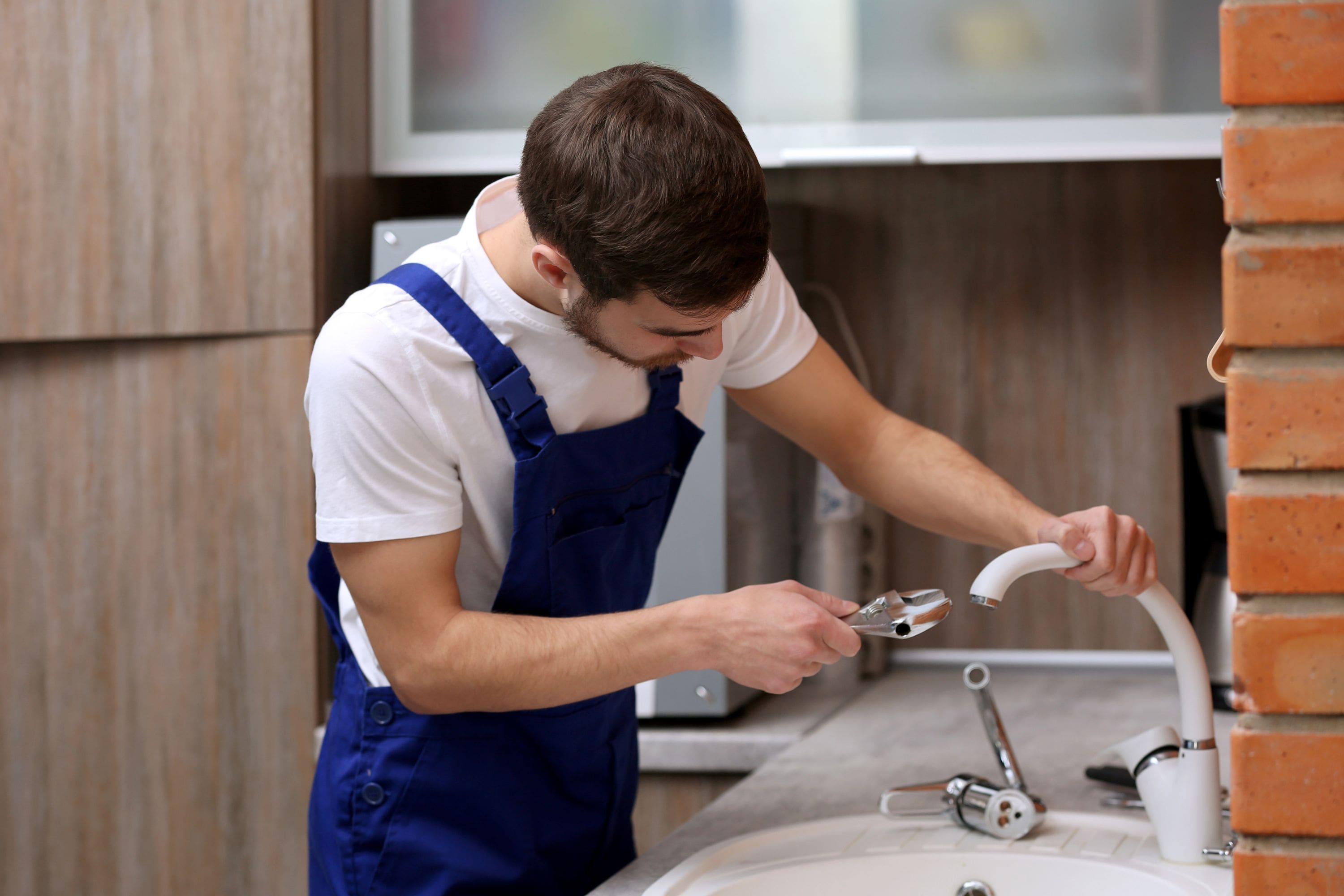What It's Necessary to Correct a Broken Faucet
What It's Necessary to Correct a Broken Faucet
Blog Article
Right here down the page you might get some incredibly good facts concerning 4 Common Reasons for a Leaky Faucet.

Trickling taps could seem like a minor hassle, however their effect exceeds just the inconvenience of the noise. From drainage to incurring unnecessary financial costs and wellness dangers, neglecting a dripping faucet can cause various consequences. In this short article, we'll explore why it's vital to resolve this typical family concern quickly and successfully.
Wastage of Water
Ecological Impact
Leaking taps add significantly to water wastefulness. According to the Epa (EPA), a solitary tap trickling at one drip per second can squander more than 3,000 gallons of water each year. This not just strains water resources but also influences ecological communities and wildlife based on them.
Step-by-Step Overview to Taking Care Of a Dripping Tap
Devices Needed
Prior to attempting to deal with a dripping tap, gather the needed tools, consisting of an adjustable wrench, screwdrivers, replacement components (such as washing machines or cartridges), and plumber's tape.
Usual Tap Issues and Their Solutions
Determine the kind of tap and the certain problem triggering the drip. Typical problems consist of worn-out washers, rusty shutoff seats, or damaged O-rings. Describe manufacturer guidelines or online tutorials for step-by-step guidance on repair services.
Financial Prices
Enhanced Water Bills
Beyond the ecological impact, leaking taps can pump up water costs significantly. The accumulated waste in time converts into greater energy expenses, which can have been stayed clear of with timely fixings.
Prospective Property Damage
In addition, long term trickling can lead to damage to fixtures and surfaces bordering the tap. Water build-up can create discoloration, corrosion, and also architectural problems if left neglected, leading to additional fixing costs.
Health Problems
Mold And Mildew and Mildew Growth
The continuous existence of dampness from a trickling faucet develops an ideal setting for mold and mildew and mold growth. These fungis not just jeopardize interior air high quality however also pose health and wellness risks, particularly for individuals with breathing conditions or allergies.
Waterborne Illness
Stagnant water in leaking taps can end up being a breeding place for germs and various other pathogens, boosting the danger of waterborne diseases. Impurities such as Legionella germs flourish in stationary water, possibly bring about severe illnesses when ingested or inhaled.
Do it yourself vs. Specialist Fixing
Advantages and disadvantages of Do It Yourself Repair Service
While some might try to repair a trickling faucet themselves, DIY repairs come with their own collection of obstacles. Without appropriate expertise and tools, DIY attempts can exacerbate the problem or result in incomplete repair work, prolonging the trouble.
Benefits of Employing an Expert Plumber
Working with a professional plumber makes sure that the underlying cause of the leaking faucet is resolved efficiently. Plumbings possess the expertise and tools to identify and repair tap problems efficiently, saving time and decreasing the danger of further damages.
Ecological Responsibility
Specific Payment to Conservation
Taking duty for taking care of dripping taps aligns with more comprehensive efforts toward water preservation and environmental sustainability. Every person's activities collectively make a significant influence on protecting valuable resources.
Lasting Living Practices
By focusing on timely fixings and adopting water-saving practices, people contribute to sustainable living practices that profit both present and future generations.
Preventive Measures
Normal Upkeep Tips
To avoid dripping faucets, perform regular upkeep such as cleaning up aerators, evaluating for leaks, and changing worn-out components immediately. In addition, think about setting up water-saving devices or updating to much more reliable fixtures.
Importance of Prompt Repair Works
Attending to trickling faucets as quickly as they're noticed stops further water wastage and prospective damage, eventually conserving both water and money in the future.
Influence On Property Value
Understanding of Well-Maintained Residential Property
Keeping a residential or commercial property in good condition, including resolving upkeep concerns like trickling faucets, boosts its regarded value and value amongst possible purchasers or tenants.
Impact on Resale Worth
Properties with properly maintained plumbing fixtures, consisting of faucets, command higher resale values in the realty market. Resolving trickling taps can add to a favorable perception during residential or commercial property evaluations and settlements.
Verdict
Addressing a leaking faucet exceeds mere benefit; it's a crucial step toward conserving water, reducing financial prices, and guarding health and residential property. Whether with DIY repair work or specialist assistance, taking action to take care of leaking taps is a tiny yet impactful way to promote liable stewardship of sources and add to a much healthier, a lot more lasting future.
How to Fix a Leaky Faucet: Step-by-Step Repair Guide
A leaky faucet may seem like a simple annoyance, but if it's not fixed promptly, that leak could cost hundreds to potentially thousands. From water damage to mold, mildew, and high water bills, even a tiny leak can be catastrophic if left unattended. Damage like this can even affect the overall value of your home, so it's important to take the right approach for leaky faucet repair. You may need the help of a plumber in some cases, but we've got a few tips you can try on how to fix a leaky faucet before calling the pros.
Four Faucet Types
When you're learning how to fix a leaky faucet, the first step is knowing what kind of faucet you're working with! There are four common types.
Cartridge Faucets
Cartridge faucets come in one- or two-handled varieties. In one-handled cartridge faucets, hot and cold water combines in a single cartridge. In the two-handled versions, hot and cold water are controlled separately and mixed in the faucet.
Ball Faucets
Ball faucets have a single lever you push up and down to adjust the pressure and rotate to change the temperature. A slotted metal ball controls the amount of water allowed into the spout.
Compression Washer Faucets
They're the oldest type of faucet, but they're still used in many homes — especially older ones. Compression faucets have two separate handles that, when turned, raise or lower the washer that seals a water valve. This valve stops water from flowing through the faucet when it is turned off.
Disc Faucets
Disc faucets rarely need to be repaired due to their maintenance-free design. The water flow is controlled by two discs — the upper one raises and lowers against a fixed lower disc, creating a watertight seal. If your disc faucet starts leaking, you may need to replace the seals or clean residue buildup from the inlets.
Fixing a Leaky Faucet
Step 1: Turn Off the Water
Whether you're learning how to fix a leaky bathtub faucet or how to fix a leaky kitchen faucet, always turn off the water supply to your working area when you're fixing a leak. The last thing you want is a flood added to your list of things to fix.
Look for the shutoff valves below your sink or around the tub and turn them clockwise to stop the water flow. If your faucet doesn't have shutoff valves, you may need to turn off the water for the whole house. Check to make sure it's off by turning the faucet on. If nothing comes out, you're ready to start the repair.
Step 2: Take Apart the Faucet
How you disassemble your faucet depends on the type of fixture you have. You can use a flathead screwdriver to remove the caps on top of the handle or handles for cartridge and compression faucets. Inside, you should see handle screws. Unscrew these with a screwdriver to remove the handle.
Disc- and ball-style faucets will typically have an inlet screw near the handle, and removing that will reveal the interior of the faucet.
Detach the Valve Stem
For cartridge- and compression-style faucets, you'll see the inner valve stem or cartridge once you remove the faucet handles. If you have a compression faucet, unscrew the brass valve stem. If you have a cartridge faucet, pull out the cartridge. If your cartridge has been in place for a while, it may require some tools or extra force to remove it due to mineral deposits.
Examine and Replace Parts
Once you've removed the parts, check them out to confirm what needs to be replaced. You may see corroded rubber washers, O-rings, stems, or cartridges. On a ball-style faucet, check the seats and springs for damage.
If you need to repair a leaky disc faucet, check the inlet and seals on the lower disc.
Once you determine what parts must be replaced, visit your local hardware store. Bring the damaged parts with you to ensure you can purchase the correct components to replace them.
Clean Valves and Faucet Cavity
If you've removed a stem or cartridge, you may notice mineral buildup in the faucet's threads. Use white vinegar to clean the valve seat by soaking it for a few minutes, then scrub it away with a soft toothbrush and rinse with warm water. You can also clean the interior of the faucet in the same way.
Reassemble the Faucet
Once your faucet is cleaned and the required parts have been replaced, it's time to reassemble it. Put the pieces back together and slowly turn the water supply back on. Doing this slowly is crucial because too much initial water pressure can damage the new hardware you've just installed.
https://homewarranty.firstam.com/blog/how-to-fix-leaky-faucet

I found that review about Water Dripping from Faucet: Why and How to Fix while doing a lookup on the internet. Do you know about another person who is curious about the subject? Please feel free to share it. Thanks for taking the time to read it.
Report this page